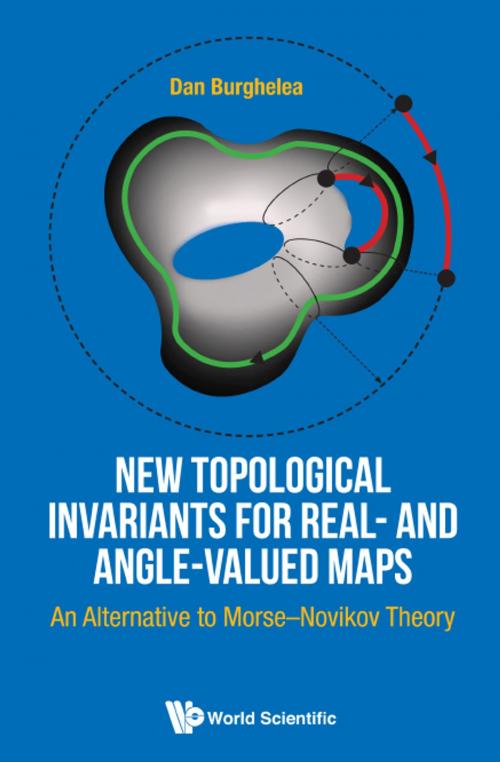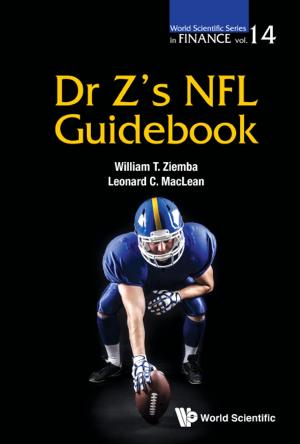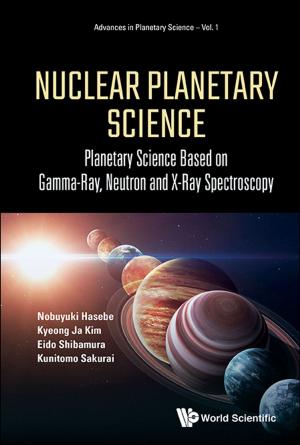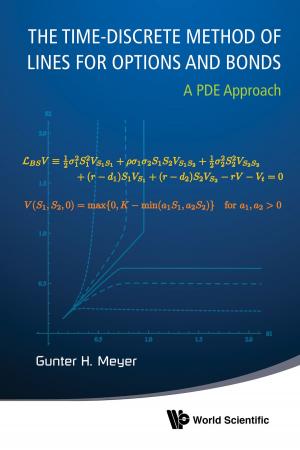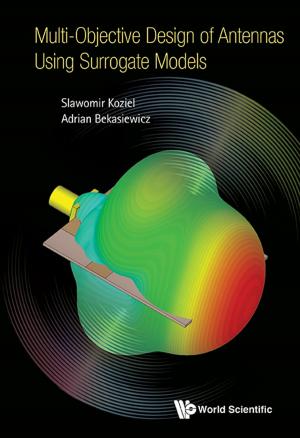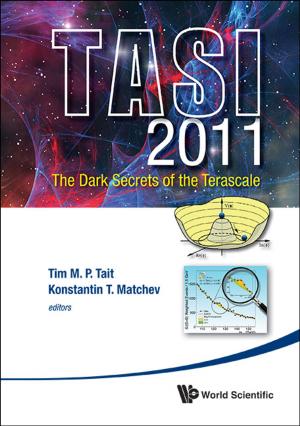New Topological Invariants for Real- and Angle-Valued Maps
An Alternative to MorseNovikov Theory
Nonfiction, Science & Nature, Mathematics, Topology, Geometry| Author: | Dan Burghelea | ISBN: | 9789814618267 |
| Publisher: | World Scientific Publishing Company | Publication: | August 16, 2017 |
| Imprint: | WSPC | Language: | English |
| Author: | Dan Burghelea |
| ISBN: | 9789814618267 |
| Publisher: | World Scientific Publishing Company |
| Publication: | August 16, 2017 |
| Imprint: | WSPC |
| Language: | English |
This book is about new topological invariants of real- and angle-valued maps inspired by Morse–Novikov theory, a chapter of topology, which has recently raised interest outside of mathematics; for example, in data analysis, shape recognition, computer science and physics. They are the backbone of what the author proposes as a computational alternative to Morse–Novikov theory, referred to in this book as AMN-theory.
These invariants are on one side analogues of rest points, instantons and closed trajectories of vector fields and on the other side, refine basic topological invariants like homology and monodromy. They are associated to tame maps, considerably more general than Morse maps, that are defined on spaces which are considerably more general than manifolds. They are computable by computer implementable algorithms and have strong robustness properties. They relate the dynamics of flows that admit the map as "Lyapunov map" to the topology of the underlying space, in a similar manner as Morse–Novikov theory does.
Contents:
- Preview
- Preparatory Material
- Graph Representations
- Barcodes and Jordan Blocks via Graph Representations
- Configurations \delta_r^f and \hat{\delta}_r^f (Alternative Approach)
- Configurations \gamma_r^f
- Monodromy and Jordan Cells
- Applications
- Comments
Readership: Graduate students and researchers in geometry and topology, topologists, geometers, experts in dynamics, computer scientists and data analysts.
Key Features:
- The theory presented here is new; it is the work of the author and his collaborators and is not available anywhere else as a self-contained presentation
- All needed mathematics is sufficiently summarized so the reader does not have to go to other books for the mathematical background used in this theory
- This theory is a refinement of “topological persistence” which already had many applications in data analysis, so it will be no surprise that this refinement will be equally useful in applications
- The researcher will find in this book a careful presentation of the theory
- The book can be used by graduate students in search for new topics of research in applied topology, by mathematicians and scientists who hope to use ideas of Morse–Novikov theory in applications, by computational topologists who will find new effective methods to calculate important homological invariants until now not easily accessible to computers
This book is about new topological invariants of real- and angle-valued maps inspired by Morse–Novikov theory, a chapter of topology, which has recently raised interest outside of mathematics; for example, in data analysis, shape recognition, computer science and physics. They are the backbone of what the author proposes as a computational alternative to Morse–Novikov theory, referred to in this book as AMN-theory.
These invariants are on one side analogues of rest points, instantons and closed trajectories of vector fields and on the other side, refine basic topological invariants like homology and monodromy. They are associated to tame maps, considerably more general than Morse maps, that are defined on spaces which are considerably more general than manifolds. They are computable by computer implementable algorithms and have strong robustness properties. They relate the dynamics of flows that admit the map as "Lyapunov map" to the topology of the underlying space, in a similar manner as Morse–Novikov theory does.
Contents:
- Preview
- Preparatory Material
- Graph Representations
- Barcodes and Jordan Blocks via Graph Representations
- Configurations \delta_r^f and \hat{\delta}_r^f (Alternative Approach)
- Configurations \gamma_r^f
- Monodromy and Jordan Cells
- Applications
- Comments
Readership: Graduate students and researchers in geometry and topology, topologists, geometers, experts in dynamics, computer scientists and data analysts.
Key Features:
- The theory presented here is new; it is the work of the author and his collaborators and is not available anywhere else as a self-contained presentation
- All needed mathematics is sufficiently summarized so the reader does not have to go to other books for the mathematical background used in this theory
- This theory is a refinement of “topological persistence” which already had many applications in data analysis, so it will be no surprise that this refinement will be equally useful in applications
- The researcher will find in this book a careful presentation of the theory
- The book can be used by graduate students in search for new topics of research in applied topology, by mathematicians and scientists who hope to use ideas of Morse–Novikov theory in applications, by computational topologists who will find new effective methods to calculate important homological invariants until now not easily accessible to computers
